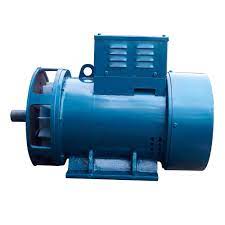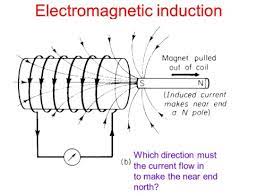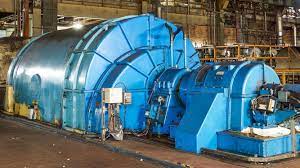Understanding Alternators: Powering the World!
Have you ever thought about how power is made? Well, there is a cool piece of equipment called an alternator that is a key part of making electricity. This blog post will explain what an alternator is and how it works by using simple words and examples.

What is an Alternator?
An alternator is a piece of equipment that turns mechanical energy into electricity. It can be found in a lot of places, like power plants, cars, and even wind turbines. An alternator is also used to make electricity, but it does so in a slightly different way than a generator.
How Does an Alternator Work?
Imagine that the wheel of your bike has a dynamo attached to it. When you pedal the bike, you make the dynamo spin, which makes electricity. In the same way, electromagnetic induction is how an alternator works. It has a rotor, which is a spinning magnet inside the stator, which is a set of stationary coils.

Electromagnetic Induction (EN)
Electromagnetic induction may sound like a complicated concept, but it’s not. When the rotor spins, it makes a magnetic field that changes around the stator’s coils. A current of electricity is made in the stator’s coils by this changing magnetic field. Imagine that the spinning magnet is a magic trick that makes electricity appear.
AC Power Generation
Alternating current (AC) is the name for the electricity made by an alternator. AC is not like direct current (DC), which only flows in one direction. Instead, AC is always going in a different direction. Alternating current gets its name from the way the current moves back and forth.
How Alternators Are Used?
Alternators are useful in many ways that we use them every day. They are used to make electricity for homes, schools, and factories in power plants. In cars, alternators provide electricity to charge the battery and power the lights, radio, and other electronics.

Alternators are interesting machines that are a big part of how electricity is made. Through electromagnetic induction, they turn mechanical energy into electric energy to power machines and devices that we use every day. Next time you turn on a light or start your car, think about how hard alternators are working behind the scenes.
Some important Question and Answers
In a power plant, what does an alternator do?
In a power plant, an alternator is a machine that turns mechanical energy into electrical energy so that a lot of electricity can be made.
How does a power plant’s alternator work?
The alternator in a power plant works the same way as any other alternator: it uses electromagnetic induction to make electricity. It has a magnet that turns (the rotor) and coils that stay still (the stator).
In a power plant, what does an alternator do?
In a power plant, the main job of an alternator is to make high-voltage alternating current (AC). This AC is then sent to homes, businesses, and industries to be used.
What makes a power plant alternator different from a regular alternator?
Even though the basic idea is the same, alternators in power plants are bigger, more powerful, and made to produce electricity on a much larger scale than those used in cars or other smaller applications.
In a power plant, what are the parts of an alternator?
In a power plant, the main parts of an alternator are the rotor, the stator, the excitation system, the cooling system, and the control system.
What does the excitation system do in an alternator at a power plant?
The excitation system controls the strength of the rotor’s magnetic field. This makes sure that the voltage coming out of the alternator is stable and controlled.
How is the voltage coming out of an alternator in a power plant controlled?
The field current going through the rotor of an alternator in a power plant is changed by the excitation system, which controls the voltage coming out of the alternator.
What kind of current does an alternator at a power plant make?
Alternating current (AC) is made by power plant alternators because it is better for long-distance gearbox.
What are power plant alternators’ cooling systems?
Alternators in power plants use cooling systems like air cooling, hydrogen cooling, and water cooling to get rid of the heat they make while working.
How do you figure out how much power an alternator at a power plant can put out?
A power plant alternator’s power output is based on its size, design, speed of rotation, and the amount of mechanical energy it gets.
How well does a power plant alternator work?
The efficiency of an alternator in a power plant is the ratio of the amount of electrical power it puts out to the amount of mechanical power it takes in. This ratio is usually high, between 95% and 98%.
How do the alternators at power plants get in sync with the electrical grid?
Before connecting the alternator and the electrical grid, the frequency and phase of the alternator’s output voltage must match the frequency and phase of the grid’s voltage.
Can alternators at power plants make direct current (DC)?
Yes, alternators in power plants can make direct current (DC) by using rectifiers to change the AC output to DC.
How are power plant alternators kept from breaking down or getting too hot?
Protective relays and circuit breakers are built into the alternators of power plants. When they find faults or overloads, they disconnect the alternator from the grid to keep it from breaking.
Can alternators at power plants make electricity from renewable sources?
Yes, power plant alternators can be used to make electricity from natural resources, such as wind turbines or hydroelectric power plants.
What is the life span of an alternator in a power plant?
The length of time an alternator lasts depends on how well it is taken care of and how it is used, but they are usually made to last for several decades.
How are alternators at power plants kept in good shape?
Alternators in power plants are inspected, maintained, and fixed as needed. This includes things like cleaning, lubricating, testing, and replacing worn parts.
How do power plants keep their alternators safe from lightning strikes?
Lightning protection systems, like lightning rods and surge arresters, are built into the alternators of power plants to divert and spread out the energy from lightning strikes.
Can the speed of alternators in power plants change?
Most power plant alternators are made to run at the same speed to keep the frequency of the electrical grid stable.
What safety steps are taken when working with alternators in power plants?
Working with power plant alternators requires following strict safety rules, such as proper grounding, keeping away from high voltages, and following the power plant’s rules for safety.